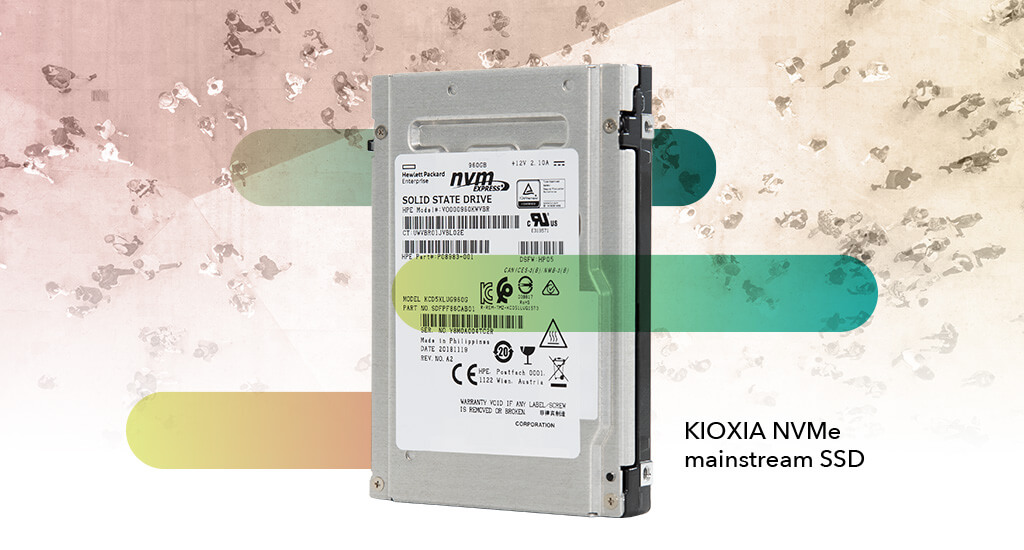
We regularly hear or read new statistics about the increasing digitization of our world. In 2020, for example, global retail e-commerce sales reached 4.28 trillion USD.1 And the number of active internet users in the world is now more than 4.6 billion, or over 60% of the world’s population.2 How does your business plan to handle this growth? Getting servers with faster storage can help you attack this problem by supporting more users and offering faster access to data as you prepare for the future.
Many organizations have long chosen SATA SSDs for their servers, but those drives might not help businesses continue to keep pace with a growing user base or slow data problems. It’s been more than ten years since SATA SSDs increased their transfer speeds,3 and there are no plans to extend SATA bandwidth beyond its current 6Gb/s transfer rate.4 Given these limitations, servers using SATA SSDs could restrict or hurt your business’s growth.
RM5 Series value SAS SSDs and CD6 and CD5 Series NVMe™ mainstream SSDs from KIOXIA, both available through HP Enterprise, offer faster transfer speeds and more data analytics and transactional database performance than SATA SSDs. In addition, the technologies in the KIOXIA SSDs have roadmaps for future improvements.5,6 Here at PT, we configured HPE ProLiant DL385 Gen10 and Gen10 Plus servers with the drives from KIOXIA as well as enterprise SATA SSDs. We then ran the drive configurations through four scenarios. Two of our scenarios measured database analytics performance, one tested transactional database performance, and one tested read-heavy sequential workloads in a VMware vSAN™ software-defined data center environment:
- Database analytics workload studies
- TPC-H-like workload with SQL Server 2017 Enterprise and Microsoft Windows Server 2016 Datacenter edition
- Yahoo! Cloud Serving Benchmark (YCSB) NoSQL workload with MongoDB
- Transactional database workload studies
- OLTP TPC-C-like workload with SQL Server 2019 and Microsoft Windows Server 2019
- Read-heavy sequential workloads using large block sizes
- Multiple read-heavy sequential I/O profiles in a software-defined data center environment using vSAN
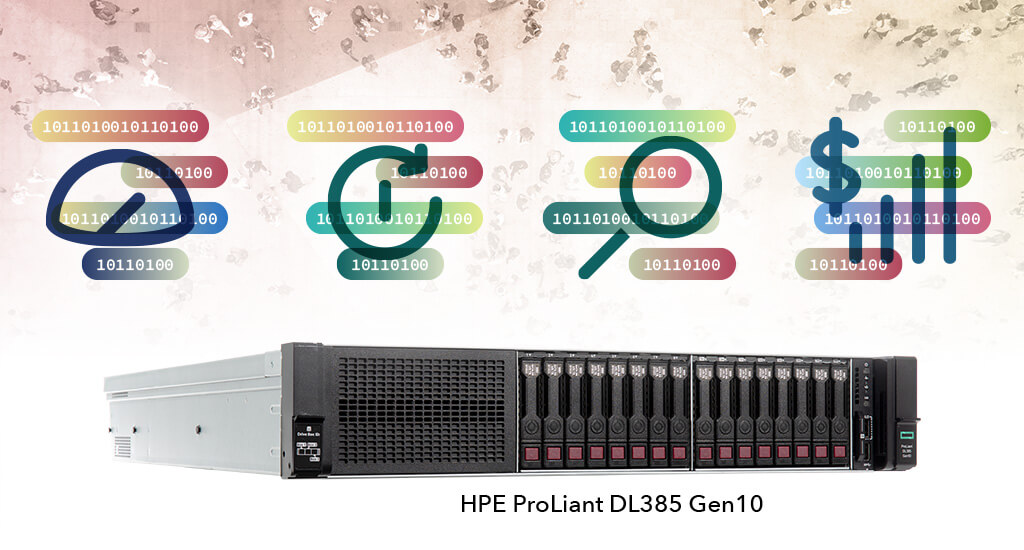
Each of our workload scenarios covered a different area of the database application space, from transactional to analytics workloads and relational to NoSQL databases. However, in all scenarios, the HPE server configurations with SSDs from KIOXIA outperformed the enterprise SATA SSD configuration.
Your business could benefit from this improved database workload performance in the following ways:
- Support more user activity to grow your user base
- Up to 57% more transactions per minute (TPM) for the transactional SQL Server 2019 workload
- Up to 177% more operations per second (OPS) for the MongoDB data analytics workload
- Make decisions at a faster pace and minimize wait times for users accessing a database
- Read data in up to 86% less time for the SQL Server 2017 data analytics workload
- Write data in up to 57% less time for the transactional SQL Server 2019 workload
- Reach important business insights sooner with faster data analysis
- Up to 45% less time to complete a 22-query set for the SQL Server 2017 data analytics workload
- Enable users to retrieve large amounts of data more quickly
- Up to 3.7X the bandwidth for the read-heavy sequential I/O workload in a VMware vSAN environment
- Get a better return on your investment
- In all four studies, configurations using RM5 Series value SAS SSDs and CD5 Series data center NVMe SSDs provided a better performance-per-dollar ratio than the same configuration with SATA SSDs—for example, 141% more OPS per dollar for the MongoDB data analytics workload, and up to 3.6X the IOPS per dollar for only 2.6% additional cost for the read-heavy sequential I/O workload.
Read the reports for each study to learn how HPE ProLiant DL385 Gen10 and Gen10 Plus servers and RM5 Series value SAS and CD5 and CD6 Series NVMe mainstream SSDs from KIOXIA could help your business grow its user base:
- SQL Server data analytics study: http://facts.pt/2h8emuf
- MongoDB data analytics study: http://facts.pt/2zah70y
- OLTP workload study: http://facts.pt/zjrz4zd
- Read-heavy sequential I/O in a vSAN software-defined storage environment study: http://facts.pt/y461pe7
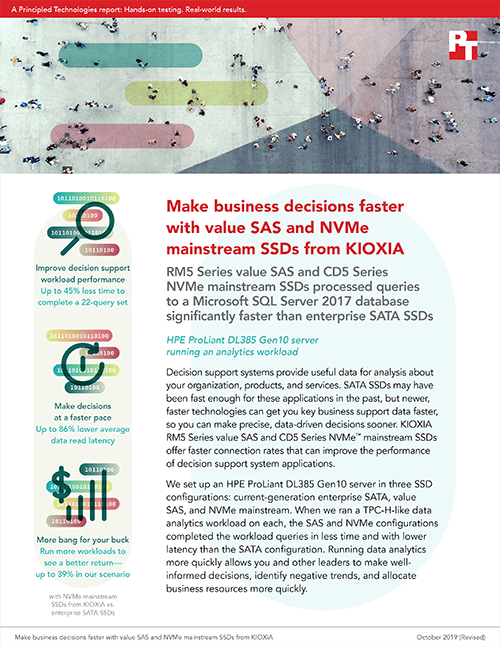

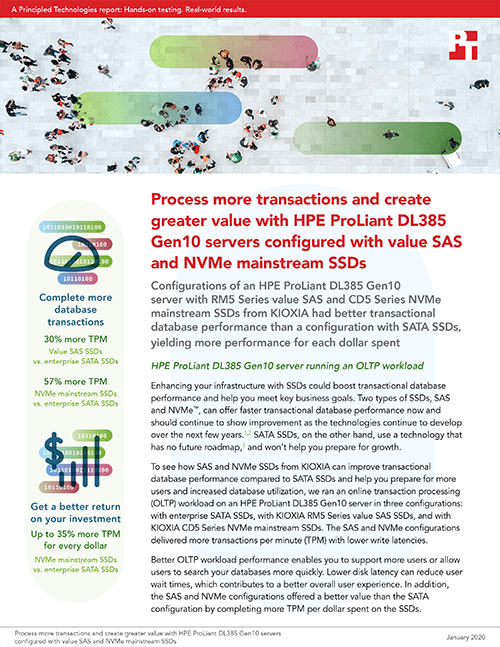
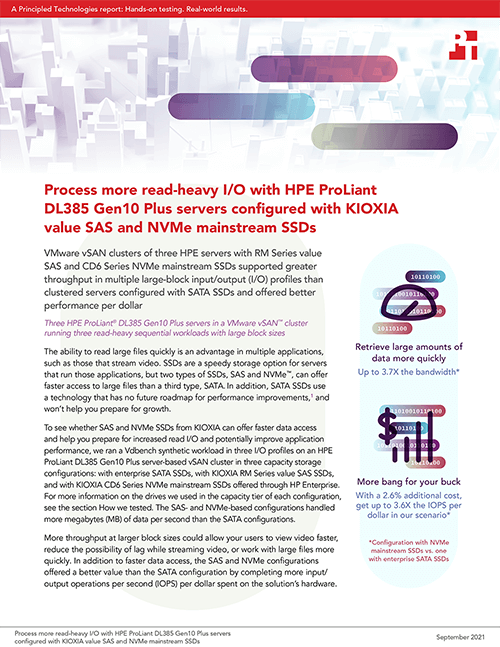
This blog was commissioned by KIOXIA.
1 Statista, “Retail e-commerce sales worldwide from 2014 to 2024,” accessed July 15, 2021, https://www.statista.com/statistics/379046/worldwide-retail-e-commerce-sales/.
2 Statista, “Global digital population as of January 2021,” accessed July 15, 2021, https://www.statista.com/statistics/617136/digital-population-worldwide/.
3 The Serial ATA International Organization (SATA-IO) last announced a doubling of maximum transfer speeds on SATA (from 3Gp/s to 6Gp/s) in August 2008. “New SATA Spec Will Double Data Transfer Speeds to 6 Gb/s,” accessed July 15, 2021, https://sata-io.org/system/files/member-downloads/SATA_6Gb_Phy_PR_Finalv2.pdf.
4 SATA-IO, “SATA-IO Frequently Asked Questions,” accessed July 15, 2021,
https://sata-io.org/sata-io-frequently-asked-questions.
5 “Serial Attached SCSI Technology Roadmap,” accessed July 15, 2021,
https://www.scsita.org/library/serial_attached_scsi_technology_roadmap/ .
6 Allen, David, and J. Metz, “The Evolution and Future of NVMe™,” accessed July 15, 2021,
https://nvmexpress.org/wp-content/uploads/NVMe-Roadmap-Webinar-2017.Final_.v2.pdf.






